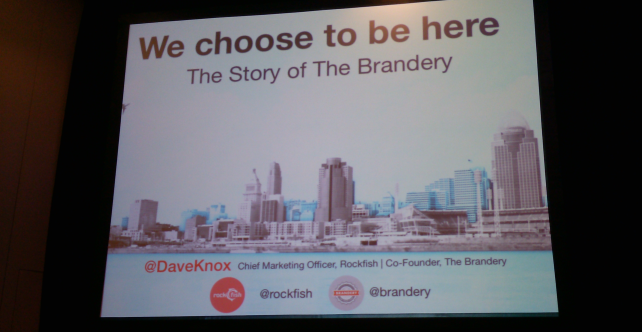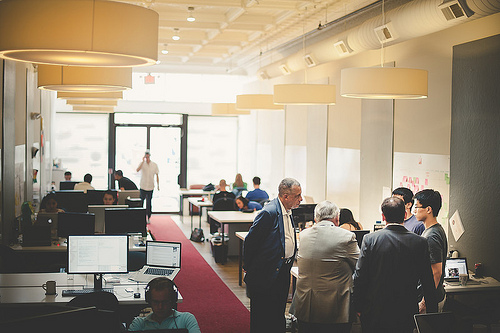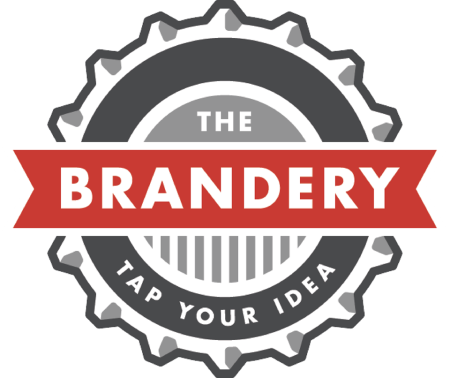A quick note on footnotes.1
Throughout Everywhere Else Cincinnati, there were many inspiring discussions. Though perhaps unintentionally, the first session was a great reminder that startups and accelerators can make a huge and lasting social impact. Beyond building software or offering a new and unique service, startups and accelerators alike can become agents of change.

The very first speaker of the conference, Dave Knox, made a great case for Cincinnati, and really for everywhere else as a whole.2 In his talk, entitled “We Chose to be Here: The Story of the Brandery,” Knox laid out many of the factors that led him and his co-founders to launch in Cincinnati, and some of the ways that they are building a community in tandem with the accelerator efforts. While the talk was, more-or-less, focused on Cincinnati, many of the points raised by Knox can be applied to just about any accelerator in an city.
Play to what can’t be replicated
This is a crucial point, and one that many accelerators either do not understand or do not acknowledge. Play to your cities strengths. The Brandery mad a conscious decision to play of Cincinnati’s strength as a design hub.3 Further, Cincinnati is home to 10 Fortune 500 Headquarters, and fifteen of the Fortune 1000 companies; Cincinnati claims to be the birthplace of consumer research and brand management.4 These factors make Cincinnati a very unique city. Rather than creating another general startup accelerator, The Brandery took a good hard look at Cincinnati, and tailored an accelerator to the strengths of the city.
Leverage corporate leaders
This point is common sense, yet so often it goes unheeded. While, yes, you do need mentors to help you through the building, branding, and marketing process, you can find these mentors at just about any accelerator. However, the very best accelerators – a class which certainly includes The Brandery – present a much wider and much more diverse group of mentors. For The Brandery, this network includes many leaders from the Fortune 500 companies in Cincinnati and VCs from the major funds all over the United States.5 The Brandery made an early effort to build these relationships, and have been remarkably successful – of the 26 companies who have graduated from the Brandery, 18 are still operating and one has been acquired, and the graduates have raised more than $20 million total.6
Inspire through physical presence

Knox argued that one of the biggest contributions that The Brandery makes is by offering a physical location. The benefits are much greater than they seem. The most basic of these benefits is offering a location for all of the teams, mentors, and Brandery staff to bounce around ideas. When you get past the surface though, it is much deeper than just an office. All the talk of “Playing to what can’t be replicated,” and “Leveraging corporate leaders” is not enough. What makes The Brandery successful is the fact that they drink their own Kool-Aid. It is one thing to talk about how great a city is or how great an industry is; it is another to roll up your sleeves and get to work.
A decent provision for the poor is the true test of civilization.
Since World War I, the Over-The-Rhine district of Cincinnati has been in a constant state of disrepair.7 Recently, however, a wave of revitalization has begun. The revitalization, begun by huge investments from the 3CDC, has been continued by The Brandery.8 Accelerators, whether they know or even acknowledge it, have the ability to act as agents of change on a micro-level. It is such a simple concept, the power of which can go unnoticed if you are not looking for it:
Lure young, creative talent to your neighborhood and guide them to success.
They’ll hire new people, bringing even more young talent and giving other service-driven businesses, like bars and restaurants, reason to set up shop.
Repeat.– Joe Baur9
If an accelerator has a real focus on community – which The Brandery clearly does, as it boasts a more than 60% retention rate for all of its portfolio companies – it can enact a sort-of socially responsible investment strategy.10 It is so easy to get caught up in the rounds and exits of the tech news cycle that sometimes this sort of thing is missed.
Though Dave Knox was speaking specifically about The Brandery, their long-term approach should henceforth serve as the blueprint for accelerators. The community-specific approach – at all levels: state, city, neighborhood – has been wildly successful for all involved. As the city grows, so to does the accelerator.
- We have been toying with the idea of footnotes for a while now, without ever really making a decision. This in-depth article from our friends at The Iron Yard pushed us off of the fence. This will be a work in progress, let us know your thoughts. ▲
- The Brandery is a seed-stage startup accelerator that focuses on branding and marketing. On their website, the Brandery outlines their philosophy regarding their thematic choice: “Our philosophy is that if your start-up is consumer focused, you must be brand focused. That belief is at the core of The Brandery and why we launched our program in Cincinnati, Ohio. We feel that there is an amazing opportunity for consumer start-ups to leverage the fundamentals of brand building” ▲
- Cincinnati is home to one of the United States’ top-five design schools (University of Cincinnati’s College of Design, Art, Architecture and Planning), one of the largest Design Week Events, and the Over-the-Rhine district of Cincinnati is one of, if not the, largest historic districts in the United States. ▲
- The Fortune 500 headquarters in Cincinnati include: Kroger, Procter & Gamble, and Macy’s. The City of Cincinnati Economic Development Division has more statistics on the cities “Consumer Products & Creative Services” and a pdf document focusing on the city’s marketing and branding history. ▲
- The Brandery’s mentors are of the highest quality, and on par with those from Y Combinator, TechStars, and 500 Startups. What’s more, in addition to the various pitch-days across the United States, The Brandery graduates take part in The P&G Pitch Day, where they pitch directly to upwards of 100 Procter & Gamble marketers. ▲
- These statistics and more on The Brandery graduates on Cincinnati.com. ▲
- Not only has the district been economically insignificant, but in 2009 the OTR district was statistically “The most dangerous neighborhood in the United States.” ▲
- Since 2004, The 3CDC (Cincinnati Center City Development Corporation) has invested more than $717 million in various projects aimed at renovating the Over-The-Rhine district, and downtown Cincinnati as a whole. ▲
- Joe Baur covered this topic in great detail for hiVelocity Media. It is really a great look at how accelerators are affecting neighborhoods and communities. ▲
- Socially Responsible Investing on Wikipedia. ▲


Pingback: TechFaster | Ed-Tech Accelerator LearnLaunchX, Boston, and The Perfect Storm